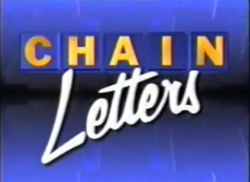This is an idea I stole from Alex Bellars, who is incredibly cool and there aren't many teachers I've said that about!
Two years ago Alex wrote this blogpost about how he uses lego blocks to help his students practise and understand the minefield that is German word order.
Today, I used this idea with some of my students who were not quite so confident as I would like.
They are studying the topic of school and I wanted them also to practise the perfect tense, too.
I gave them a pile of Duplo bricks, some whiteboard markers and this key:
Time phrases = Green blocks
Verbs (& pronouns) = Blue blocks
Nouns = Red blocks
Connectives = Yellow blocks
This is what they came up with:
When they had got the basics right, I then shared out all the bricks and asked them to use them all to make a long sentence. There was an abundance of green blocks for some reason, so intensifiers and adjectives became "green words", too.
Then the students had to write a paragraph in German using their lego models as, well, models. They really enjoyed themselves and learned something, too.
It doesn't get much better than that.
Welcome to the rambling thoughts of a 50 year old languages teacher with too much time on his hands, most of it spent in the kitchen. If you have any comments or questions about language learning or resources please email or follow me on twitter @dominic_mcg
Friday, 24 January 2014
Friday, 17 January 2014
Chain Letters - another game show idea for MFL classes
Chain letters is another one of those television game shows which I've adapted into a writing or speaking exercise to get more able or experienced students thinking.
In the TV programme contestants won money by changing, adding or removing one letter at a time in a word to create a new word.
My classroom version involves no money at all but the idea is still the same.
Give the students a word in the target language and give them 5 minutes or so to create new words by changing, adding or removing letters. They have to make a list of as many words as they can in the allotted time. The winner is the person with the longest list of words.
The word must be a real, French word. The students can only change one letter at a time and they must change a different letter each time.
For example:
A French lesson.
The word is POMME
Change the P to S - SOMME
Add a T - SOMMET
Change the S to a C - COMMET
Add an N before the T - COMMENT
Add É at the end - COMMENTÉ
Change the T to a C - COMMENCÉ
Change the N to an R - COMMERCÉ
and so on...
...it's another game I play when I can't sleep.
You should try it, it really works.
Saturday, 11 January 2014
Plus belle la vie - Terrible French soap but fantastic resource.
Plus belle la vie is one of my favourite French TV programmes.
#pblv, as all the cool kids are calling it, is a French soap set in Mistral, a fictional quartier of Marseille in the south of France.
The programme focuses on the daily lives and loves of the inhabitants of Mistral and their shady, if not downright criminal, business practices.
In short, it's Eastenders, but with sunshine.
It is broadcast 5 evenings each week on France3 at 20:25 and each morning on TV5monde (in the UK it's Sky channel 717) and many episodes can be seen on youtube, too, so you've no excuse not to watch it.
If you're as obsessed as I am, you can follow the show on twitter and facebook, too
The main reason I'm recommending this is not so that you can spend hours watching a television programme which IMDB (rather generously) rates at 2.7/10 but I think the programme's website is a goldmine of material which could be used when studying the topics of family and describing people.
There is a comprehensive profile of each character giving their personalities, likes and dislikes.
Using this could introduce a cultural element to language learning and might be a fresh change from describing the Simpsons or the Family Guy cast when teaching this topic.
Activities you could do with this resource include:
- Create a family tree of characters in one family
- Describe a character and get a partner to guess which character you are talking about.
- Make a guess who type game using the characters' profile photos
- Create a mindmap type activity saying how the characters are connected
- Use Pam hook's SOLO hexagons to do the above task, too
- Compare and contrast with characters in English language soaps.
- Add the challenge of getting students to write a "what will happen next" paragraph using the future tense.
- Say or write about which character you are most like.
- Who would you like to meet and give reasons why.
- Who would you not like to meet and give reasons why.
- Create a new family (or character) to join the cast. Describe them, give them a personality and a role within the PBLV community.
I'm sure you could think of many more.
Subscribe to:
Comments (Atom)



